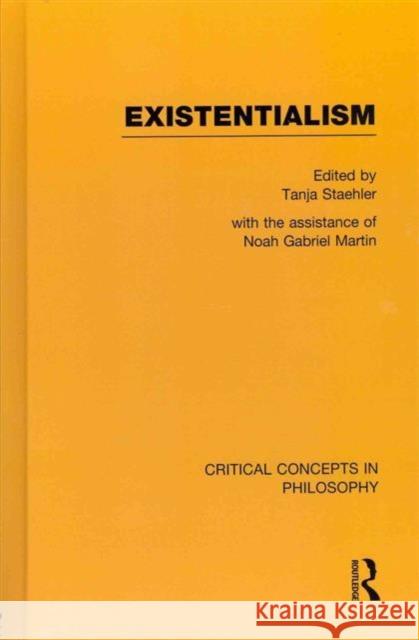Existentialism » książka
Existentialism
ISBN-13: 9780415667005 / Angielski / Twarda / 2012 / 1528 str.
Existentialism entered the public consciousness after the Second World War, especially through the work of Jean-Paul Sartre and Simone de Beauvoir. Indeed, these charismatic and engaged thinkers gave philosophy a level of glamour it had not before enjoyed, while existentialism's forefathers--including Friedrich Nietzsche and Soren Kierkegaard--were soon rediscovered and embraced anew. Moreover, in addition to the initial connection between existentialism and literature, the movement developed many interdisciplinary approaches: feminist existentialism, religious existentialism, and political existentialism, to name just a few. As a broad philosophical doctrine, as well as in its interdisciplinary combinations, existentialism is of lasting significance, and remains a thriving enterprise. To make sense of existentialism's huge--and growing--corpus of scholarly literature, this new Routledge collection answers the need for an authoritative, up-to-date, and comprehensive reference work. In four volumes, it assembles the foundational and the very best cutting-edge research. Volume I ('Key Figures and Definitions') maps the development of existentialism from the first existentialist to the classic and contemporary existentialists. It also gives users an impression of the most prominent definitions of existentialism. Volume II ('Basic Themes and Concepts'), meanwhile, collects the most important texts on the key notions of existentialism, such as subject/object, authenticity, ambiguity, humanism, and emotions. Volume III ('Existentialist Aesthetics and Psychology') attends to those areas outside philosophy which have been most influenced by existentialism: aesthetics (literature, theatre, art, theory) and psychology (psychoanalysis, psychotherapy). The final volume in the collection ('Horizons of Existentialism') considers several other interdisciplinary areas, including: religion, feminism, communications, and politics. Existentialism is supplemented with a full index, and includes a newly written comprehensive introduction which places the collected material in its historical and intellectual context. The collection will be valued by scholars, students, and researchers as a vital research resource.











